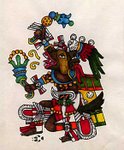Luna para Galileo
 Cuando en Padua, hace cuatrocientos años, Galileo di Vincenzo Bonaiuti de' Galilei alzó su tubo de cobre con puntas de vidrio pulido hacia los cielos y lo fijó en la luna, encontró a Aristóteles equivocado. La luna no era una esfera perfectamente lisa, como las maravillosas bolas de cuarzo, ágata, lapislázuli, malaquita, labradas en los famosos talleres lapidarios de Florencia, puestos sobre su escritorio sino cacariza y gastada como la Tierra. Fue un día decisivo cuando Galileo alzó su catalejo hacia la luna, un primer paso en arrastrarla más cerca a nosotros o estirarnos hacia a ella con enfoque e intento. Desplazó a la Tierra como centro del universo, vio la Vía láctea como congerie de estrellas más allá de la cuenta, las fases de Venus y que Júpiter gozaba sus propias lunas.
Cuando en Padua, hace cuatrocientos años, Galileo di Vincenzo Bonaiuti de' Galilei alzó su tubo de cobre con puntas de vidrio pulido hacia los cielos y lo fijó en la luna, encontró a Aristóteles equivocado. La luna no era una esfera perfectamente lisa, como las maravillosas bolas de cuarzo, ágata, lapislázuli, malaquita, labradas en los famosos talleres lapidarios de Florencia, puestos sobre su escritorio sino cacariza y gastada como la Tierra. Fue un día decisivo cuando Galileo alzó su catalejo hacia la luna, un primer paso en arrastrarla más cerca a nosotros o estirarnos hacia a ella con enfoque e intento. Desplazó a la Tierra como centro del universo, vio la Vía láctea como congerie de estrellas más allá de la cuenta, las fases de Venus y que Júpiter gozaba sus propias lunas.Tres-cientos-cincuenta años después, el hombre colocaría un objeto en la luna y en diez años más violaría su suelo pisándolo por primera vez, dejando allí el único color que jamás había tenido, no el signo de las seis bolas rojas en fondo dorado sino el rojo y azul de las listas y estrellas. Veinte años más y una nave espacial llamada “Galileo” rodearía a Júpiter en compañía de sus sesenta y tres lunas.
Afortunado Júpiter por tener tantas lunas, pero para mí, nuestra única luna basta, cazadora de los cielos, ya no virgen, vieja y cacariza mas aun bella más allá del cantar, mirándome por la ventana consolando y bendiciendo con su luz reflejada.
Paz, Galileo, que al fin ya ciego perdiste tu luna; fue una gran carga que nos quitaste. ¿Temería el Papa, adivinarías tú que tu herejía un día nos colocaría a las orillas más lejanas de la Vía láctea donde pertenecemos, rodeando una estrella menor, guardados por una sola luna que nos alcanzaste por bien o por mal? Pace, Galileo Galilei, ahijado de la luna.
© Rafael Jesús González 2009
Moon for Galileo
 When in Padua, four-hundred years ago, Galileo di Vincenzo Bonaiuti de' Galilei raised his copper, ground-glass-ended tube to the heavens and fixed it on the moon, he found Aristotle wrong. The moon was not a perfectly smooth sphere like the marvelous balls of quartz, agate, lapis-lazuli, malachite, carved in the famed lapidary workshops of Florence, sitting on his desk, but pockmarked and worn like the Earth. It was a decisive day when Galileo lifted his spy-glass to the moon, a first step drawing her closer to us or reaching for her with focus and intent. He displaced the Earth as center of the universe, saw the Milky Way as a congeries of stars beyond the counting, the phases of Venus, and that Jupiter enjoyed moons of its own.
When in Padua, four-hundred years ago, Galileo di Vincenzo Bonaiuti de' Galilei raised his copper, ground-glass-ended tube to the heavens and fixed it on the moon, he found Aristotle wrong. The moon was not a perfectly smooth sphere like the marvelous balls of quartz, agate, lapis-lazuli, malachite, carved in the famed lapidary workshops of Florence, sitting on his desk, but pockmarked and worn like the Earth. It was a decisive day when Galileo lifted his spy-glass to the moon, a first step drawing her closer to us or reaching for her with focus and intent. He displaced the Earth as center of the universe, saw the Milky Way as a congeries of stars beyond the counting, the phases of Venus, and that Jupiter enjoyed moons of its own.Three-hundred-fifty years later, man would place an object on the moon and in ten years more would violate her ground stepping on it for the first time, leaving there the only color it ever had, not the sign of the six balls gule on a field or but the red and blue of the stars and stripes. Twenty years more and a space-craft called “Galileo” would circle Jupiter in company with its sixty-three moons.
Fortunate Jupiter to have so many moons, but for me, our one moon is enough, huntress of the skies, no longer virgin, old and scarred, but beautiful still beyond the singing, peering at me through my window soothing and blessing with her reflected light.
Peace, Galileo, who finally blind lost your moon; it is a great burden you lifted from us. Might the Pope have feared, would you have divined that your heresy one day would place us at the farthest fringes of the Milky Way where we belong, circling a minor star, guarded by a single moon you had drawn to us for good or for ill? Pace, Galileo Galilei, godson of the moon.




No comments:
Post a Comment